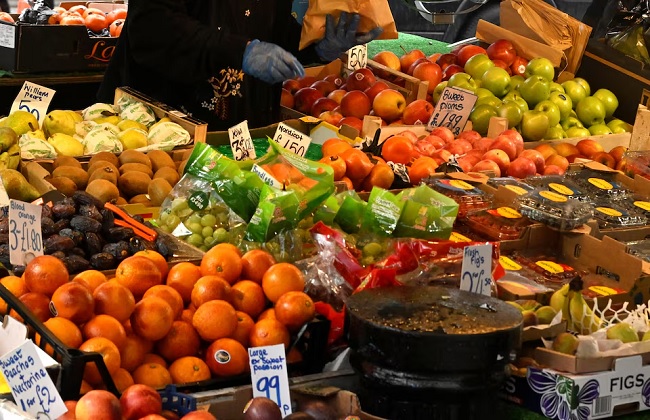
Rising international quotations for vegetable oils, dairy products and meat pushed the benchmark index for world food commodity prices up by 1.1 percent in March, its first increase in seven months, the Food and Agriculture Organization of the United Nations (FAO) reported Friday.
The FAO Food Price Index, which tracks monthly changes in the international prices of a set of globally-traded food commodities, averaged 118.3 points in March, down 7.7 percent from its corresponding value one year ago.
The FAO Vegetable Oil Price Index led the increase in March, rising 8.0 percent from February and reaching a one-year high as quotations for palm, soy, sunflower and rapeseed oils all rose.
International palm oil prices increased due to seasonally lower outputs in leading producing countries and firm domestic demand in Southeast Asia, while those for soyoil recovered from multi-year lows, boosted by robust demand from the biofuel sector, particularly in Brazil and the United States of America.
The FAO Dairy Price Index increased for the sixth consecutive month, up 2.9 percent from February, led by rising world cheese and butter prices.
The FAO Meat Price Index also increased, rising 1.7 percent from the previous month, with international prices up for poultry, pig and bovine meats.
By contrast, the FAO Cereal price Index declined by 2.6 percent, averaging 20 percent below its March 2023 value.
The drop was led by decreasing global wheat export prices, which declined due to ongoing strong export competition – underscored by cancelled purchases by China – among the European Union, the Russian Federation and the United States of America.
Maize export prices edged upwards in March, partly due to logistical difficulties in Ukraine, while the FAO All Rice Price Index dipped by 1.7 percent amid subdued global import demand.
The FAO Sugar Price Index declined by 5.4 percent from February, with the drop mainly driven by an upward revision to the 2023/24 sugar production forecast in India and the improved pace of the harvest in Thailand.
FAO also released a new Cereal Supply and Demand Brief on Friday, raising its forecast for world cereal production in 2023/24 to 2 841 million tonnes, reflecting expectations of greater outputs of maize, rice and wheat.
Global cereal utilization in 2023/24 is pegged at 2 828 million tonnes, a 1.3 percent increase from the 2022/23 level. World cereal stocks are forecast to end the 2024 seasons at 894 million tonnes, a 2.3
